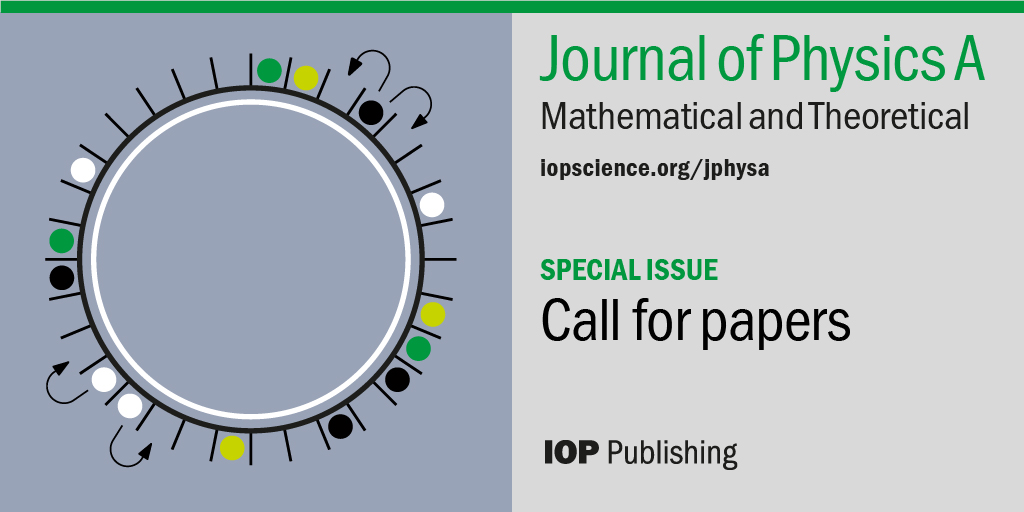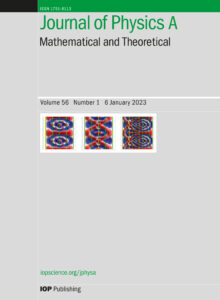JPhysA特刊征稿|非平衡多体物理的量子电路模型

特刊详情
客座编辑
- Bruno Bertini,英国诺丁汉大学
- Wen Wei Ho,新加坡国立大学
- Lorenzo Piroli,法国巴黎高等师范学院
- Tomaž Prosen,斯洛文尼亚卢布尔雅那大学
主题范围
The past few years have witnessed the emergence of a new paradigm studying idealized models for many-body physics out of equilibrium, consisting of local quantum circuits and quantum cellular automata (QCA).
A compelling motivation for the study of these models came from the advent of so-called Noisy-Intermediate-Scale-Quantum devices, implementing early prototypes for digital quantum computers. When viewed as physical systems operating close to their native hardware, these devices can be conceptualized as sets of qubits evolving according to discrete sequences of few-body unitary processes, possibly interspersed with local projective measurements and feedback. These ingredients give rise to dynamics which may be completely different from the local-Hamiltonian evolution traditionally studied in condensed matter physics, allowing for novel types of universal behavior and collective effects.
Quantum circuits and QCA have been used as minimal theoretical models to deepen our understanding of these new effects. In addition, despite being extreme idealizations for the many-body dynamics of real systems, their simplifying minimal structure also provides an analytic handle on topical but hard questions in quantum chaos, thermalization, and quantum information scrambling. Simplifications are often made possible by statistical mappings leveraging the discrete space-time structure or the presence of randomness and disorder, establishing several connections to topics in statistical mechanics and mathematical physics.
The aim of this special issue is to collect research at the cutting edge of this emerging field. The specific topics include:
- Dual unitary quantum circuits: dynamics and classifications
- Random quantum circuits (short- and long-range models for chaotic dynamics)
- Measurement-induced entanglement phase transition in random and dual unitary quantum circuits
- Integrable and non-integrable quantum cellular automata
- Projected Ensemble and deep thermalization
- Complexity transitions in shallow vs deep quantum circuits
This issue is dedicated to the memory of Marko Medenjak
投稿流程
特刊文章与JPhysA期刊常规文章遵循相同的审稿流程和内容标准,并采用同样的投稿模式。
有关准备文章及投稿的详细信息,可以参阅IOPscience页面的作者指南。
作者可登入期刊主页进行在线投稿,先选择“文章类型”,然后在“选择特刊”的下拉框中选择“Quantum-Circuit Models for Many-Body Physics Out of Equilibrium”。
投稿截止日期:2024年6月30日。
期刊介绍

- 2022年影响因子:2.1 Citescore:4
- Journal of Physics A: Mathematical and Theoretical(JPhysA)每年出版50期,针对运用数学结构来描述物理世界的基本过程,并探索这些结构的分析、计算和数值方法。期刊内容涵盖:统计物理;非平衡系统、计算方法和现代平衡理论;混沌和复杂系统;数学物理;量子力学和量子信息理论;场论和弦理论;流体和等离子体理论;生物模型等方面。文章类型包括原创性论文和综述,以及关注于热点研究的专题综述和特刊,提供及时、全面的纵览。
